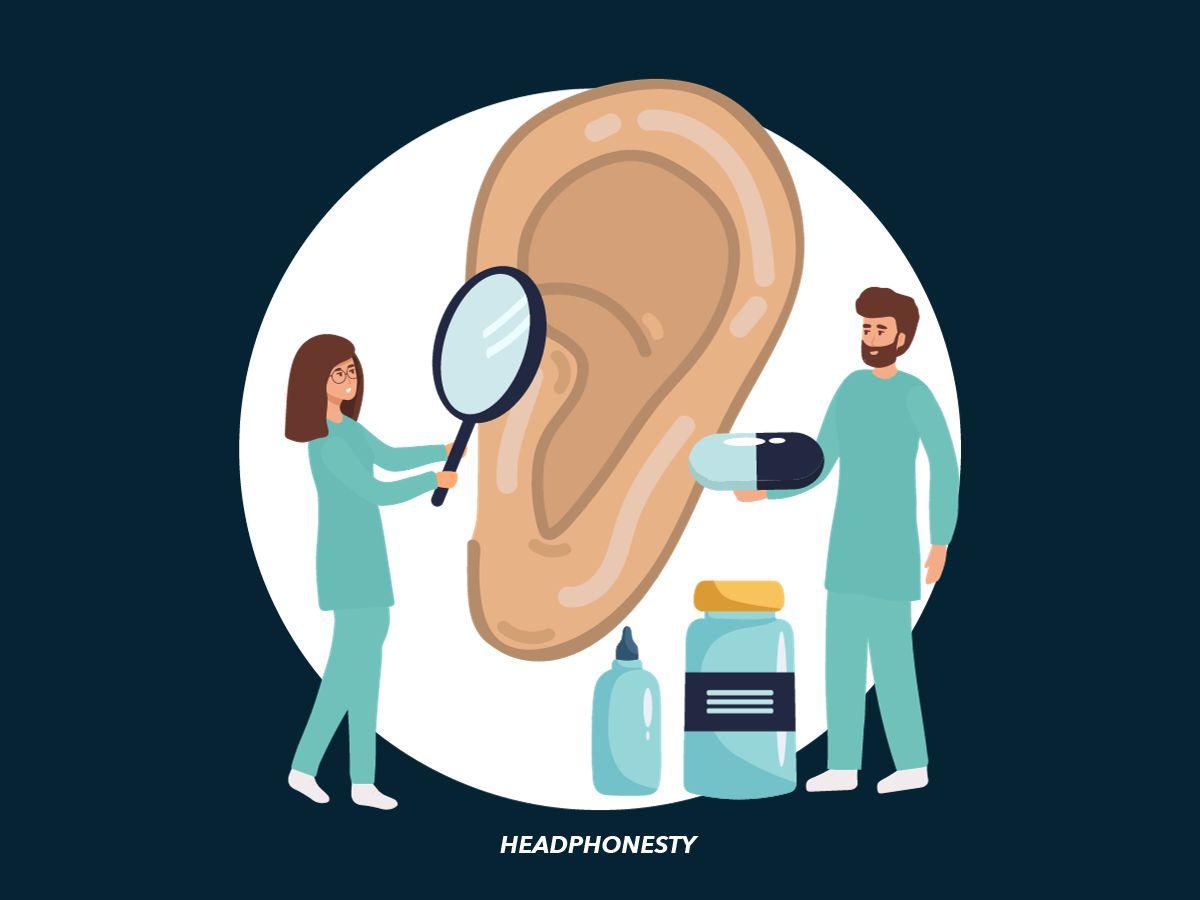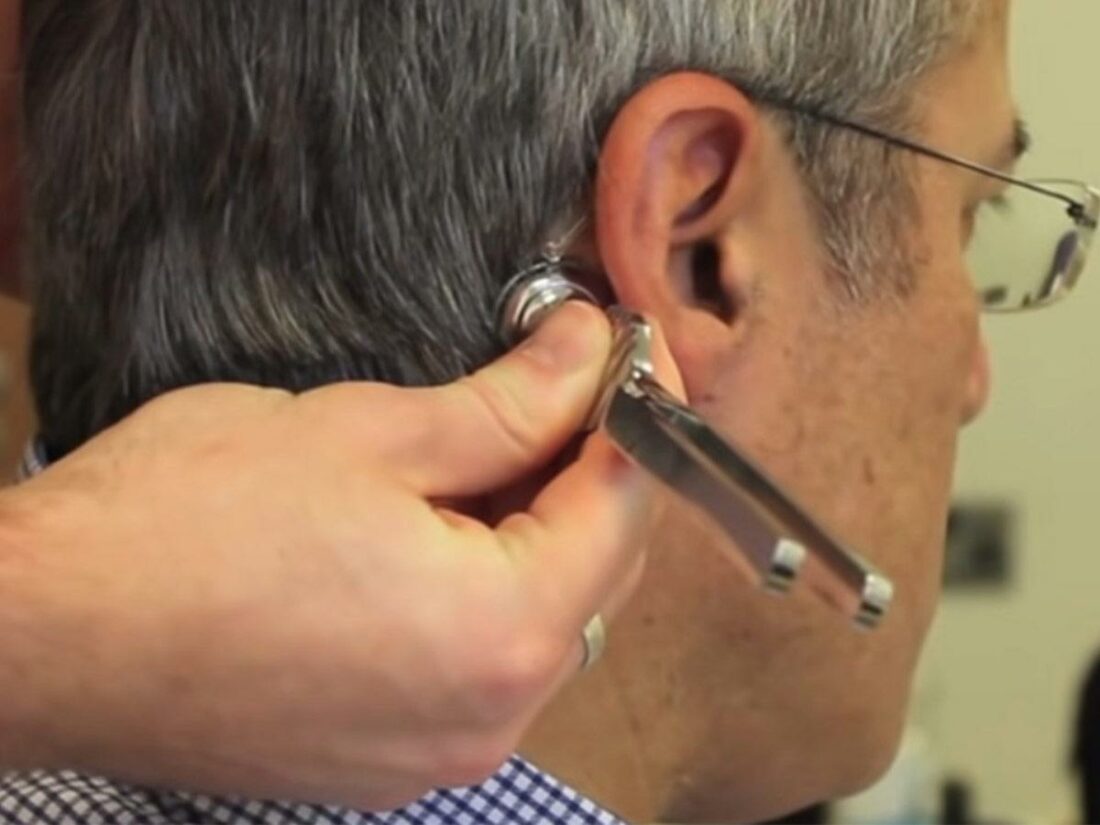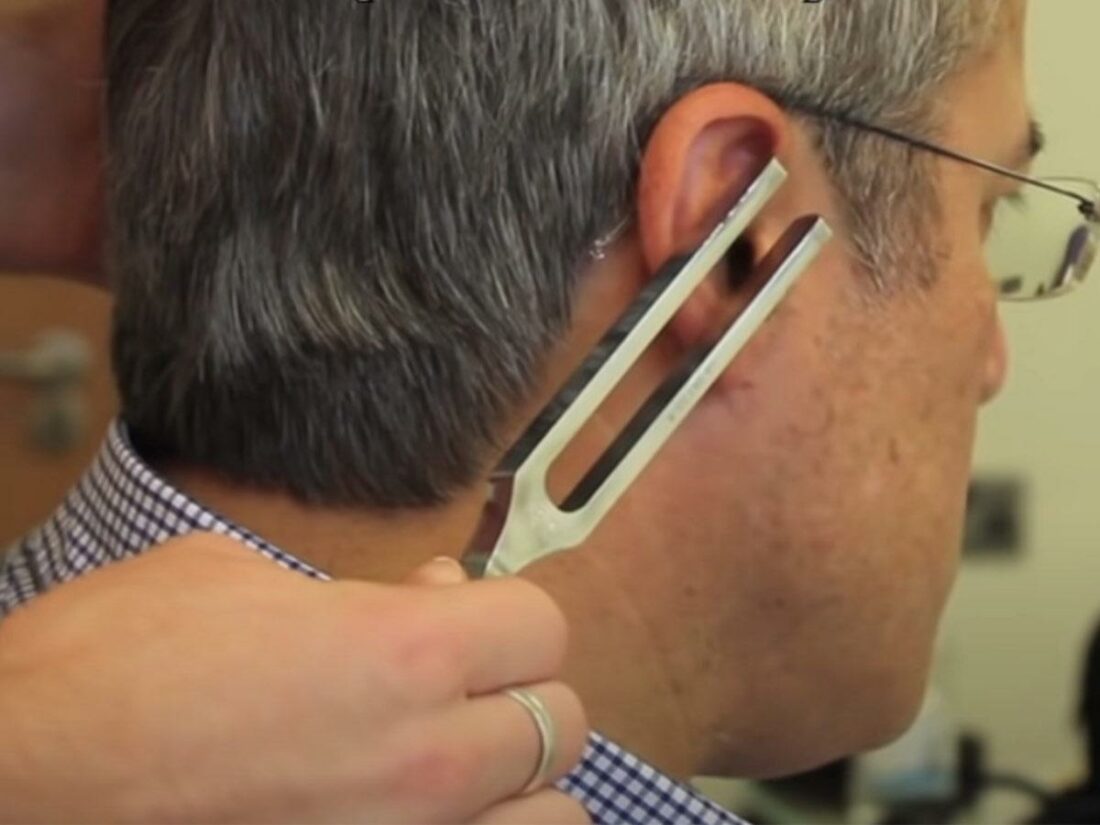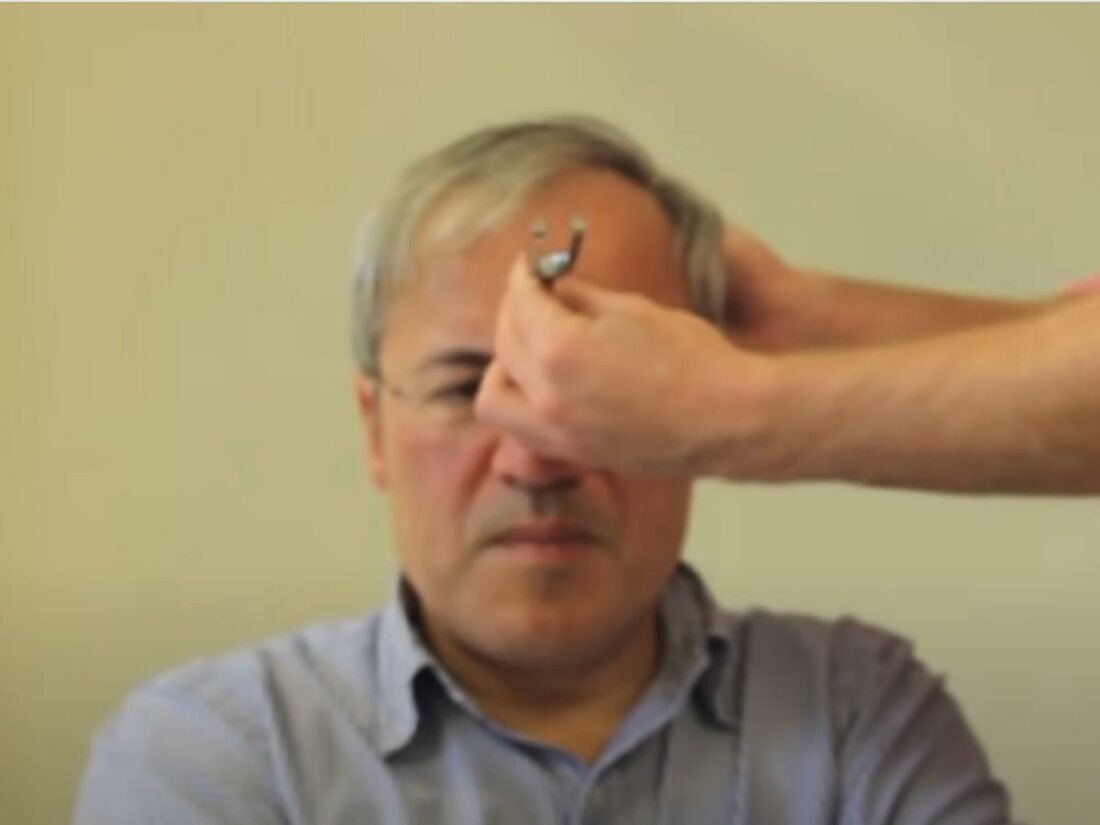Learn how the Rinne test, combined with the Weber test, detects different types of hearing loss.
The Rinne test is a quick standard assessment for individuals with suspected hearing issues.
However, for those preparing to take the test, it may seem complex, causing uncertainty and perhaps even fear about how it works.
Not to worry, the Rinne test is a painless procedure involving the gentle use of a tuning fork, so keep reading as we explain the steps involved and more.
What Is a Rinne Test
A Rinne test evaluates hearing loss by comparing sound perception through air and bone conduction. It is used to diagnose conductive hearing loss, where sound struggles to travel through the ear canal.
The Rinne test is done in conjunction with the Weber test to pinpoint the exact type of hearing loss and its location.
Carrying out both tests together enhances the accuracy of hearing assessments and helps doctors tailor precise treatment plans.
How Doctors Conduct Rinne and Weber Tests
To conduct both the Rinne and Weber tests, the doctor would require a 512-Hz or 256-Hz tuning fork.
Below is the step-by-step procedure:
- The doctor taps the tuning fork on a hard surface and places the base on the mastoid bone behind your ear.
Tuning fork is placed in the bone behind patient’s ear. (From: YouTube/Doctor O’Donovan) - You’ll be asked to let the doctor know when you can’t hear the sound anymore, and they’ll jot down how long that takes.
- Quickly after, the doctor moves the still-vibrating fork close to your ear canal, making sure it doesn’t touch your ears.
The vibrating tuning fork is moved to the patient’s ear canal. (From: YouTube/Doctor O’Donovan) - Again, you’ll need to tell the doctor when the sound disappears, and they’ll check the time it takes. This is the end of the rinne test.
- The doctor will then proceed to the Weber test. Here, they’ll hit the tuning fork once more and position it in the middle of your forehead.
The vibrating tuning fork is then placed on the patient’s forehead. (From: YouTube/Doctor O’Donovan) - Finally, the doctor will ask if you hear the sound the same in both ears, more on one side, or not at all.
Understanding Rinne Test Results
After the Rinne test, a normal result signifies typical hearing function, whereas abnormal results can indicate specific hearing disorders. Below is an interpretation of the Rinne test outcomes:
- Normal: A normal Rinne test is considered a “positive test“. It means that you heard the sound better through air conduction (AC) than bone conduction (BC). So, the sound near your ear canal lasts approximately twice as long as the sound behind your ear.
- Sensorineural Hearing Loss: You may still hear better through AC than BC, but both values will be reduced compared to normal hearing. This suggests an issue with the inner ear or auditory nerve which can be caused by trauma, aging, illnesses, etc.
- Conductive Hearing Loss: This is indicated when you hear better through BC than AC or have a significantly prolonged bone conduction time. It implies a problem in the outer or middle ear.
Frequently Asked Questions
- What is the difference between Rinne test and Weber test?
- How does the Rinne test determine conduction deafness?
- How reliable is the Rinne test?
What is the difference between Rinne test and Weber test?
The Rinne test compares air and bone conduction to assess hearing loss type and degree. On the other hand, the Weber test identifies unilateral hearing loss by checking if the sound is heard better in one ear or both.
How does the Rinne test determine conduction deafness?
In Rinne’s test, if you hear the tuning fork better through bone conduction (on the mastoid bone) than through air conduction (near the ear canal), it suggests conduction hearing loss.
How reliable is the Rinne test?
While the Rinne test is a reliable initial screening tool, it may not provide a complete diagnosis. So, it is typically used alongside other tests to assess hearing conditions comprehensively. The accuracy also depends on proper technique and patient cooperation.



